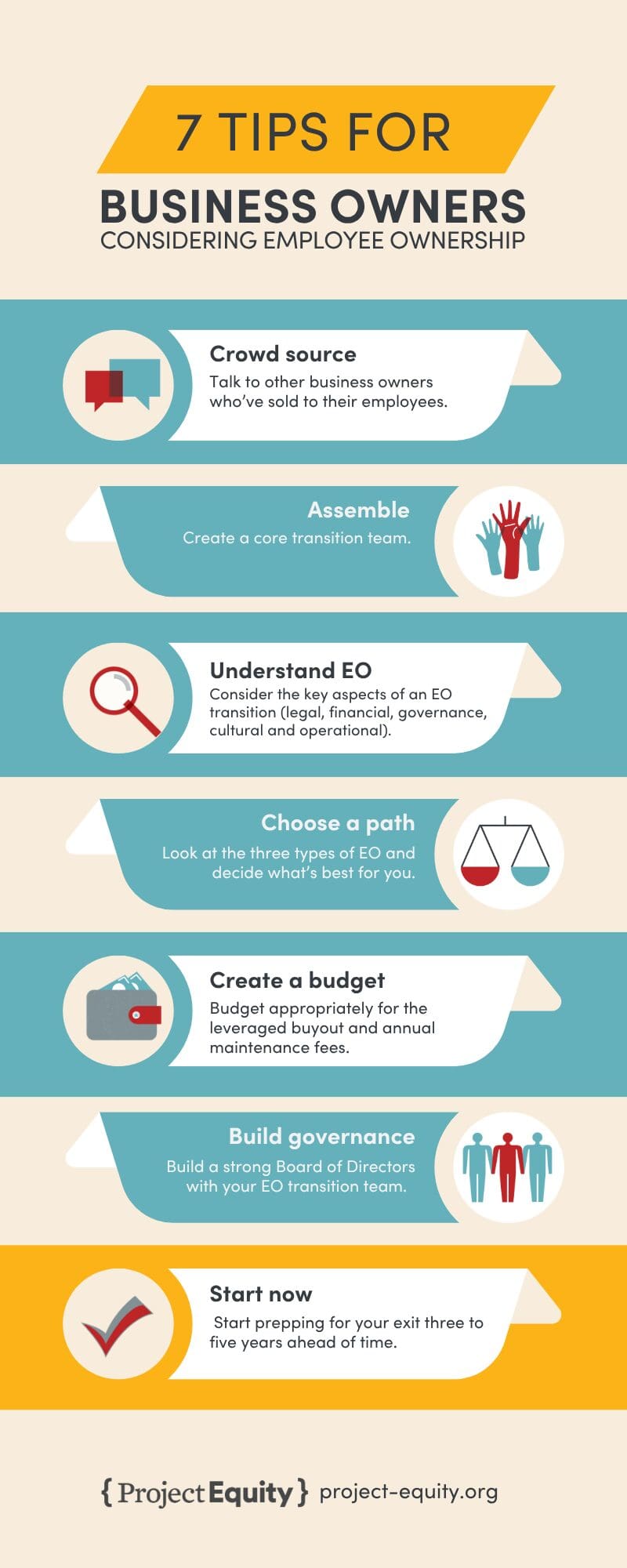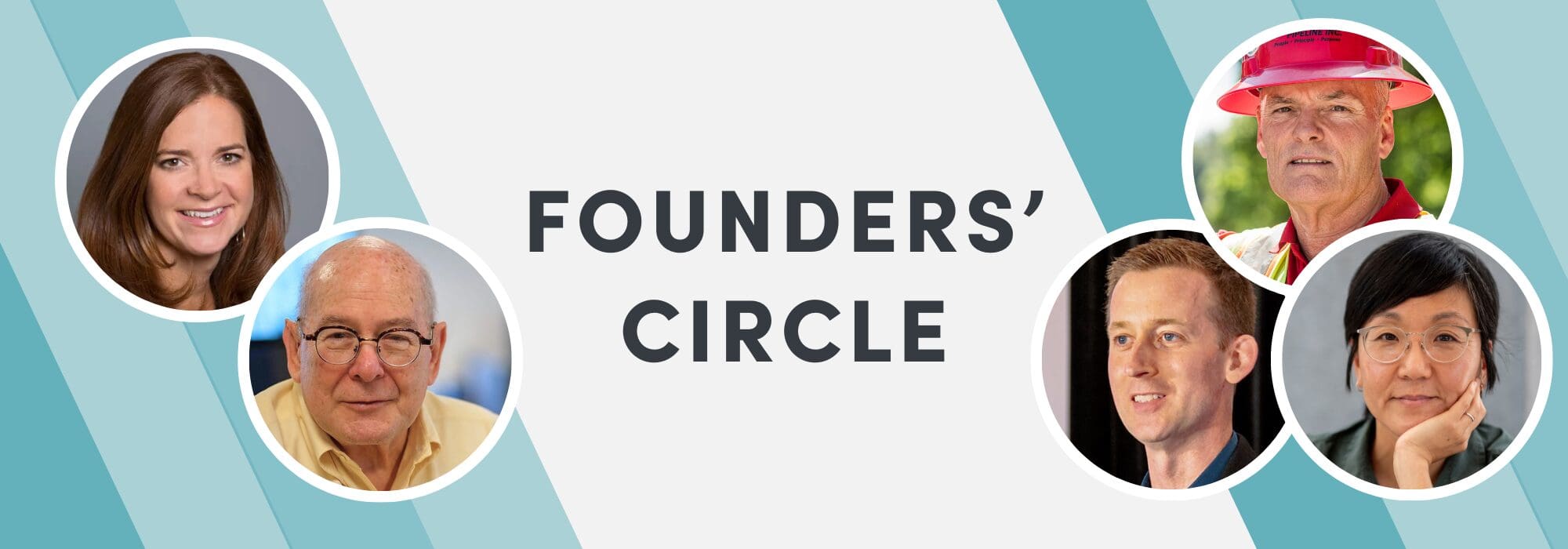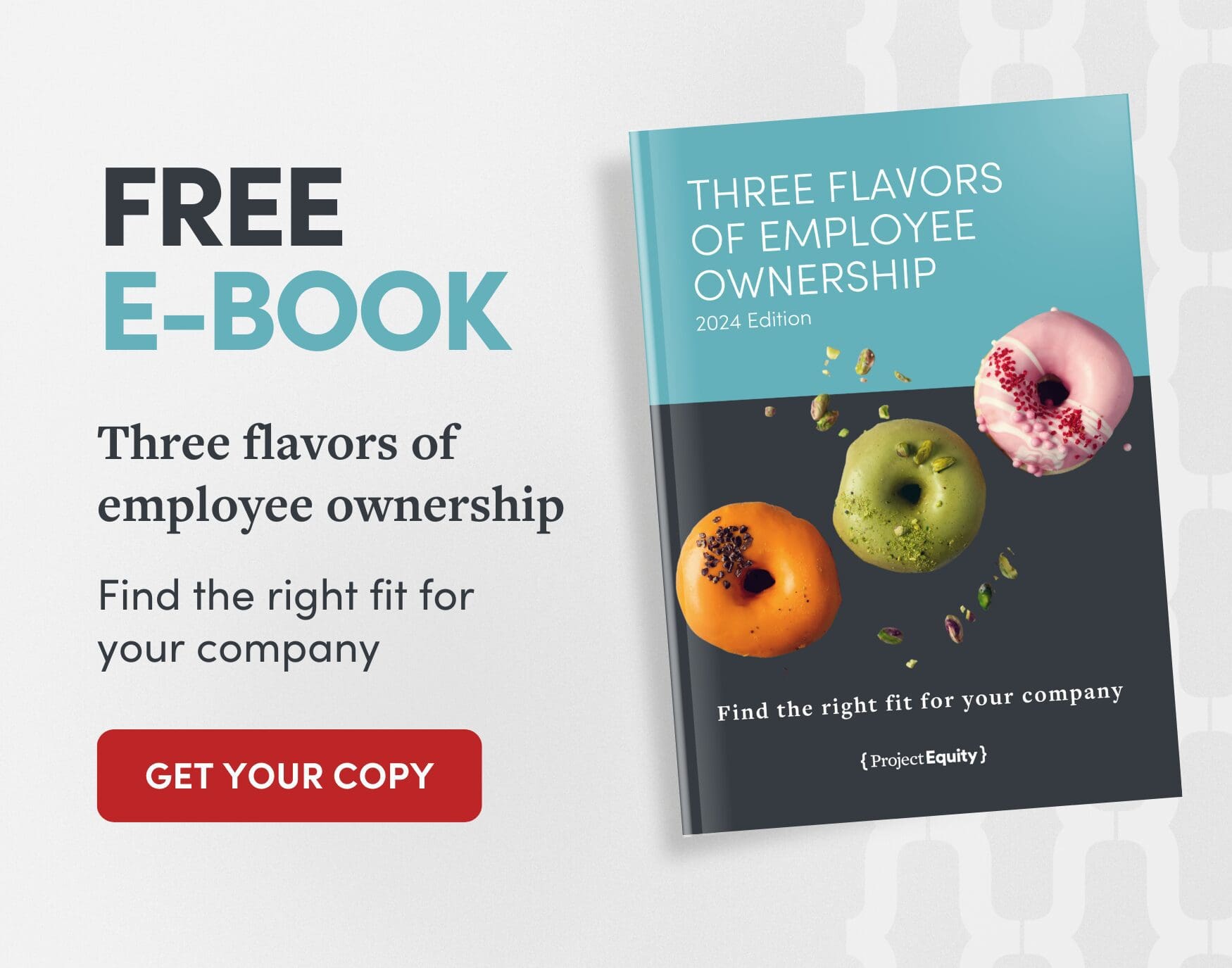Employee ownership: Seven lessons from the Founders’ Circle
- Project Equity
Employee ownership is a transformative approach for many companies—especially those looking to establish a legacy that empowers employees as owners. For business owners considering employee ownership, understanding the process through firsthand experiences can be invaluable.
Recently, members of Project Equity’s Founders’ Circle—Cameron Madill of PixelSpoke, Kristyn Klei Borrero of CT3, Saul Rockman of Rockman Et Al, Na Young Ma of Proof Bakery and Craig Danley of Delta Pipeline—shared insights on some common questions they faced on their paths to employee ownership (EO).
The Founders’ Circle is made up of select business leaders who have sold their businesses to their employees. Members are passionate advocates for employee ownership who want to promote, support and educate others about its many benefits.
Here are seven key takeaways for anyone contemplating this route.
1. Learning from experience
One of the most common questions asked is, “How can I connect with employee-owned companies to learn about their experience?” Engaging directly with others who have gone through the process is essential. Many business owners find clarity by speaking with other colleagues in similar industries, as it provides relatable examples and a realistic view of the challenges and rewards. Joining networks and engaging with nonprofits like Project Equity can connect you to resources, case studies and peer learning opportunities.
Want to learn more about employee ownership and how it can benefit your company? Book a free 30-minute consultation with an EO expert. Plus, we can put you in touch with another owner who’s transitioned to EO so you can hear their experience.
2. Balancing team engagement
It’s important to be intentional about who you involve in your transition to employee ownership, and you will need to balance engagement between the entire team of employees and a core transition team (often consisting of consultants, legal advisors and senior management).
While it’s crucial to keep the entire company informed and excited about the conversion, the core team will need to focus on structuring the process and managing intricate details. As a best practice, foster open communication with all employees to ensure transparency, even as the core team handles the heavy lifting.
3. Key steps to a thriving conversion
A structured approach is essential for a successful conversion. One framework, “The Five Conversions,” was highlighted as a valuable guide. This approach helps leaders consider the five aspects of the transition—legal, financial, governance, cultural and operational. Business owners in the Founders’ Circle stressed the importance of considering these key areas throughout the transition to build a stable foundation and empower employees as co-owners.
Technical assistance providers such as Project Equity are trained to assist in this process. We design bespoke project plans that include guidance across all of those categories throughout the transaction, and we have our Thrive program to support the cultural integration of EO and implementation of EO after the transaction.
4. Asking the right questions
As you’re embarking on your EO journey, one of the most valuable pieces of advice from seasoned employee-owners is to ask the right questions about EO and what type will be best for your business. Look at all three kinds of EO: Employee Stock Ownership Plans (ESOPs), worker cooperatives (known as coops) and Employee Ownership Trusts (EOTs). Consider working with a service provider that can help you steward the different options available to you and help you clarify your priorities and goals to select the right model.
To learn more about the three types of EO, check out our free e-book, the Three Flavors of Employee Ownership.
5. Assembling the right team and managing costs
One question that often comes up is, “How much will this cost?”
In our experience, ESOPs generally cost $250,000+ to set up and have fees in that same range on an annual basis going forward. With EOTs, initial costs can generally range from $40,000 – $80,000 with ongoing annual costs of around $10,000 – $20,000. With coops, initial costs are generally between $35,000 and $75,000 with ongoing annual costs of around $5,000.
We should note that when you sell to your employees, you don’t need a broker—in fact, with EOTs and coops, the costs to transition to EO are often cheaper than utilizing broker services in the traditional market.
It’s essential to budget appropriately, and assembling the right team—which usually includes an EO specialist, lawyer and CPA—will generally save you money in the long run. While there is an upfront investment, having the right team can make all the difference in a smooth transition and in addressing important financial considerations such as financing, deal structuring, tax implications and cash flow management.
Conversion to employee ownership often brings new financial realities. The cost of the transition and debt management are critical areas that need attention. The Founders’ Circle shares that many stakeholders, from attorneys to consultants, may underestimate these costs, so it’s important to have a strong financial plan and consider future financial commitments, such as patronage or profit-sharing models. That’s why it’s critical that someone—if not everyone—on your conversion team of professional advisors have EO experience. This helps right-size future costs, think about the implementation of EO, etc.
6. The timeline and flexibility of departure
When considering employee ownership as a succession plan, the Founders’ Circle advises to begin thinking about the preparation required for three to five years before your desired exit. This can help you set your transition up for success, avoid potential issues, and ensure the appropriate infrastructure is in place for when you want to start the transition. Preparation doesn’t always take that long, but it’s wise to start planning ahead as soon as you begin considering your exit options.
When it comes to exiting, you have flexibility in deciding what to do. Owners can gradually phase out their involvement based on the company’s readiness and their own goals. You could sell to existing employees while staying with the company—something that the former owner of Maximum Fun did. Alternatively, you could sell your business and exit your operational role, while possibly staying on as an advisor or board member of the future employee-owned company.
Learn more in these case studies.
7. Governance and new leadership
For some owners, the most surprising aspect of the transition is the role of the Board of Directors. The Founders’ Circle highlights that the transition team not only shapes the governance structure but also has a lasting impact on the company’s culture. Building a strong Board of Directors requires diverse voices and active participation to create a culture where all employees feel ownership and commitment.
Conclusion
Employee ownership is a powerful tool for succession planning. It provides business owners with flexibility regarding exit timing and involvement post-transition. Additionally, employee ownership can simplify succession by creating a built-in pipeline of successors, with employees who are ready to take on leadership roles and maintain the company’s vision.
Transitioning to employee ownership isn’t simple, but it’s a deeply rewarding path over 6,000 U.S. businesses have taken that can ensure a legacy of shared success and sustainable growth. For business owners contemplating this route, learning from those who’ve walked it can provide crucial insights and help avoid common pitfalls. The Founders’ Circle reminds us that while the journey is complex, the rewards—both for the outgoing owner and incoming employee-owners—are well worth the effort.
For more insights into EO journeys, dive into these ownership stories.

Peer learning is essential. Connect with companies in similar industries or other business owners who have sold to their employees to gain actionable insights and realistic perspectives. Many areas of the country also have thriving employee ownership networks that can advise you on your journey—including economic development organizations, state centers for employee ownership, local governments, small business development centers, business advisors, technical assistance providers, EO nonprofits and more.
You need a core transition team of an EO specialist, lawyer and CPA (at the very least) for your EO transition to be successful. ESOP setup costs range from $100k-$300k, EOT setup costs range from $10k-$75k and worker cooperative setup costs vary from $30k-$75k.
Successful succession planning often begins 3–5 years ahead and allows founders flexibility—such as phased buyouts, advisory roles or gradual exits—to align timing with their personal and business readiness.
Article details
Audience
Topic


